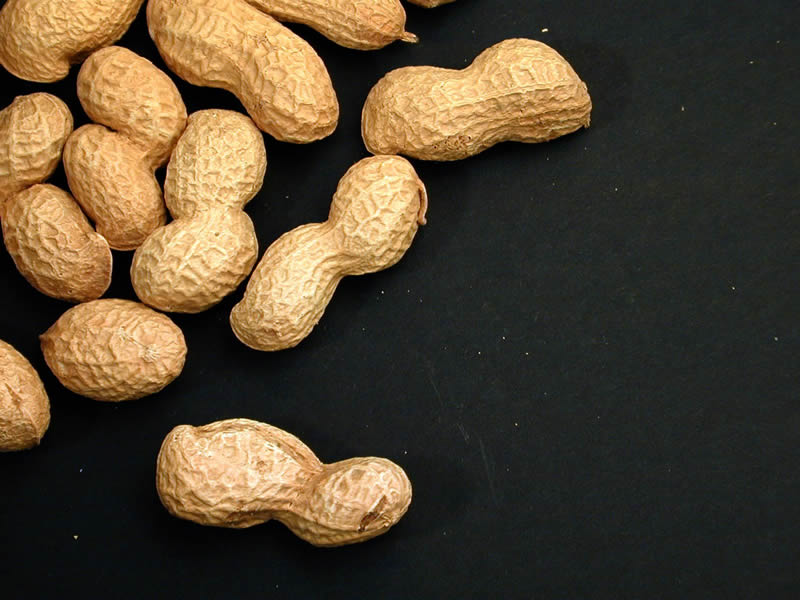Legumes

Legumes are defined as members of the bean family. This family is large and diverse and contains over 16,000 species. There are many important groups of legumes in the human diet today. They include:

- Lentils
- Peas
- Broad beans
- Chickpeas
- Soybeans
- Beans (lima, common)
- Peanuts
In terms of importance to humans, the legume family is second only to the grass family. Every major civilization has had a legume as well as a grain as a part of their support system. Examples include:
- Barley and lentils
- Corn and beans
- Rice and soybeans
Did You Know?
Members of the bean family that are known as important food crops are also known for their tendency to form root associations with various bacteria. This relationship is known as symbiosis because both organisms live together with a mutual benefit to both.
Legume symbiotic relationships usually involve the bacteria Rhizobium, which enters the roots and causes swollen areas known as “nodules.” Bacteria live within the nodules and absorb nutrients from the host plant. In return, the bacteria incorporate atmospheric nitrogen and convert it to a form useable by the plant. Another outcome of this relationship is a natural fertilizer released into the surrounding soil.
Native North American Legumes
Toxic Species
Many of the native legumes of North American were not edible due to high levels of alkaloids. Many of the native legumes have common names like locoweed or vetch. Many of these plants are extremely toxic and can cause symptoms such as erratic behavior, aggression, lethargy, depression, loss of balance and nervousness in livestock that ingest these species.
Groundnut
One native legume species called groundnut, hog peanut, or potato bean (Apios americana) has been used by indigenous peoples. Native to eastern North America, this legume species is a perennial vine that produces both edible beans and large edible tubers.
Native peoples used the uncooked seeds of groundnut as a substitute for pinto beans in bread. Seeds and roots were also ground into flour. Roots and tubers were also an extremely important food source.
Honey Mesquite
Honey Mesquite (Prosopis glandulosa) is a spiny shrub or small tree in the pea family that grows in the desert southwest. It was an important staple plant to many indigenous people. The pods were a very reliable food source because fruiting occurred even during drought years. Indigenous people collected pods in large quantities and stored them in granary baskets on the roofs of houses or sheds. The beans were ground into flour, which was used to prepare cakes and breads, the main staple of the diet in some areas. Various refreshing drinks were made from the pods. Flowers were eaten raw or roasted, formed into balls, and could be stored in pottery vessels.
Fun Facts
- Broad beans have been in cultivation for 6,000 years in the Americas.
- There are over 4,000 cultivars of beans in the U.S. alone.
- Christopher Columbus observed Native Americans cultivating beans in the "three sisters method" or "companion planting method":
- Tribes would grow beans, corn, and squash together.
- Corn was planted in a checker board pattern not in rows like today; beans were planted at the base of the corn stalk.
- Corn stalks would serve as trellises for the beans and in turn the beans would fertilize the soil.
- Squash was planted in the spaces between the corn plants and thus protected from the sun.
- Animals were also deterred from eating the squash due to the dense corn and bean vines.
 Locoweed pods. Locoweed can cause severe health problems and permanent nerve damage. Photo by James Henderson.
Locoweed pods. Locoweed can cause severe health problems and permanent nerve damage. Photo by James Henderson.
 Groundnut (Apios americana). Photo by Thomas G. Barnes. Barnes, T.G. & S.W. Francis. 2004. Wildflowers and ferns of Kentucky. University Press of Kentucky.
Groundnut (Apios americana). Photo by Thomas G. Barnes. Barnes, T.G. & S.W. Francis. 2004. Wildflowers and ferns of Kentucky. University Press of Kentucky.
 Honey mesquite (Prosopis glandulosa var. torreyana) pod. Photo by Teresa Prendusi.
Honey mesquite (Prosopis glandulosa var. torreyana) pod. Photo by Teresa Prendusi.
Peanuts
This South American native is a famous legume more often thought to be a true nut. Domestication probably occurred in Bolivia and Argentina. The Portuguese took the peanut or ground pea, as it is called in many parts of the world, to Africa where it is a major dietary item today.
The majority of peanut consumption in the United States occurs in the form of peanut butter although a substantial portion of the crop is used for hog feed. Peanut butter gained popularity following the 1904 St. Louis World’s Fair.
To learn more about important species within the bean family, explore U.S. Forest Service Research and Development Treesearch.



